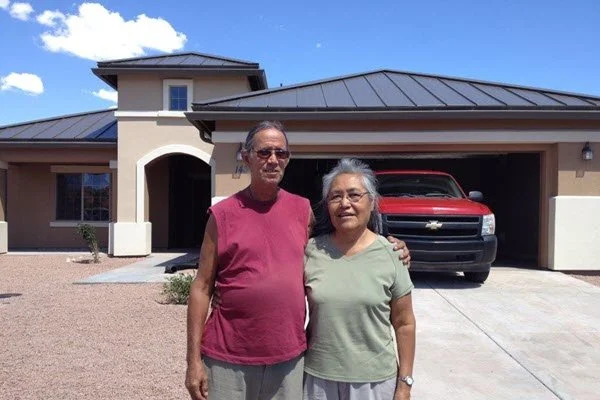Participatory Models of Housing: Promising design practices for affordable housing on tribal lands
Project Type: Research
My Role: Field researcher
Methods: Field studies, user interviews, literature review and synthesis, policy analysis
Location: Southwest, US
Sponsoring Institutions: Research funded and published by the Harvard Joint Center for Housing Studies and NeighborWorks America
Duration: 2021-2022
*Photos taken by author and courtesy of Come Dream Come Build, Native Partnership for Housing, and the Pueblo of Jemez Housing Autthority
proJect DeScription
In the US, 22 percent of households in tribal areas have severely inadequate housing, are overcrowded, or both. Many deficient units are in projects funded, designed, and/or run by the US Department of Housing and Urban Development (HUD). Furthermore, these projects often implement standardized designs that do not support social and cultural norms and practices related to the home. In “Participatory Models of Housing: Promising Design Practices for Affordable Housing on Tribal Lands,” a paper co-published by the Harvard Joint Center for Housing Studies and NeighborWorks® America, I explore several promising, nascent efforts to develop housing that is affordable, higher-quality, and culturally sensitive.
I examine such efforts with reference to the following questions:
How does federal policy influence the design decisions practitioners are able to make with tribal housing?
What current design practices exist that have been successful in addressing housing needs on tribal lands? How do Native design practitioners define Native and culturally sensitive design?
How can design uplift Native communities? How can design create self-determination for tribes?
More information and the complete paper can be found here.
Project Images




Learnings
Participation to create hope: Resident participation in the design of social housing, combined with high-quality construction and attainable financing, can create individual and community hope for more effective housing projects in the future. This is crucial to rebuild trust in institutions in contexts, such as native reservations in the US, where there is a history of poor quality social housing.
Considering the capacity of the audience to participate: In running a participatory process, it is important to understand the capacity of audiences to express their wants (as opposed to needs) for their home. It may be necessary to provide an array of options, as opposed to a blank canvas.
The meaning of culturally-sensitive design: Especially in native contexts, culturally-sensitive housing is not (only) created through the use of a traditional aesthetic (ex: stucco) but also in designing a layout that corresponds to cultural uses of the home. To determine what culturally sensitive design means in relation to space, it is important to ask about the use of space (preferably through interviewing/storytelling in the house itself) and imagine with the residents how their ideal house would be designed for their needs.

